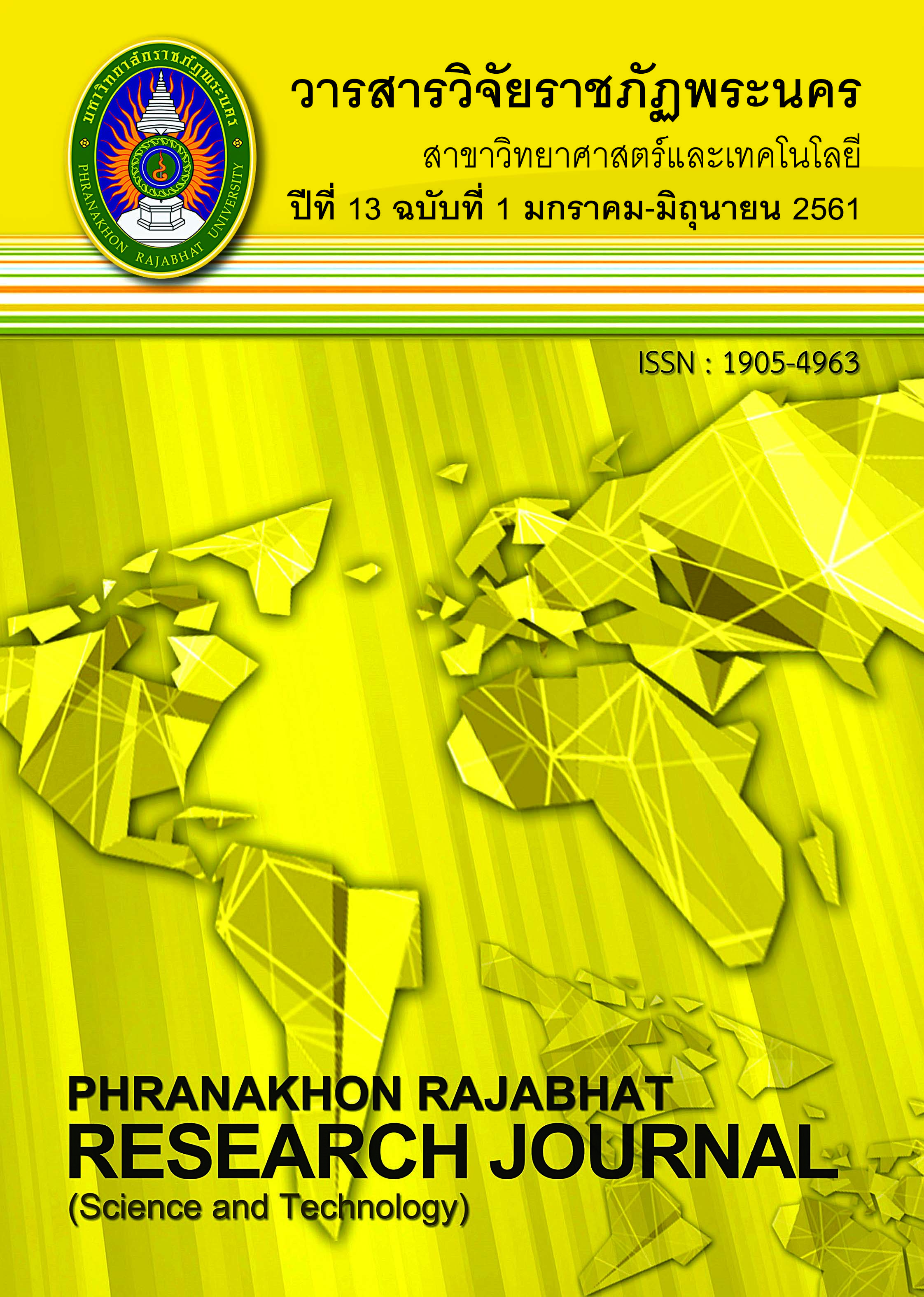DEVELOPMENT OF HUMIDITY SENSOR USING SEMICONDUCTING ORGANIC POLYMER IN CELLULAR FORMS
Keywords:
humidity sensor, cellular form, PEDOT : PSS, melamine foamAbstract
Humidity sensor was developed in cellular forms using semiconducting organic polymer. Poly (3,4-ethylenedioxythiophene) : polystyrene sulfonate (PEDOT:PSS) was the key material that played the important role in the humidity sensing. It was embedded in the structure of melamine foam by dip and dry process for thin film formation. In order to distribute PEDOT : PSS film in the cellular structure, LF-221 surfactant was added in the PEDOT : PSS solution and the concentration of surfactant was varied. The impedance and capacitance responses were observed in different relative humidity, and the results revealed that the relative humidity response of the obtained sensor depended on the concentration of surfactant. The appropriate concentration should be in the range of 0.1% - 1%. Moreover, the results showed that the frequency of electrical measurement affected the dynamic switch behavior for humidity sensing. The frequency of 1 kHz
is the best values for electrical measurement. The results of electrical measurement indicate that the obtained sensor from PEDOT:PSS in a cellular form has potential to be a humidity sensor in the capacitive mode more than the resistive mode due to the better in humidity response and dynamic switch behavior for humidity sensing
References
Dai, X., Zhang, Z., Jin, Y., Niu, Y., Cao, H., Liang, X., Chen, L., Wang, J., and Peng, X. (2014). Solution-processed, high-performance light-emitting diodes based on quantum dots. Nature. 515, 96-99.
Dunmore, F. (1938). An electric hygrometer and its application to radio meteorography. Journal of Research of the National Bureau of Standards. 20, 723–744.
Farahani, H., Wagiran, R., and Hamidon, M.N. (2014). Humidity sensors principle, mechanism, and fabrication technologies: a comprehensive review. sensors. 14, 7881–7939.
Feng, X., Chen, W. and Yan, L. (2015). Free-standing dried foam films of graphene oxide for humidity sensing. Sensors and Actuators B. 215, 316–322.
Ho, K.Y., Li, C.K., Syu, H.J., Lai, Y., Lin, C.F., and Wua, Y.R. (2016). Analysis of the PEDOT : PSS/Si nanowire hybrid solar cell with a tail state model. Journal of Applied Physics. 21(120). 215501.
Kuş, M., and Okur, S. (2009). Electrical characterization of PEDOT : PSS beyond humidity saturation. Sensors and Actuators B. 143. 177–181.
Salehi, A., Kalantari, D.J., & Goshtasbi, A. (2006). Rapid response of au/porous-GaAs humidity sensor at room temperature. In Proceedings of 2006 Conference on Optoelectronic and Microelectronic Materials and Devices (125-128). Perth, Australia
Downloads
Published
Issue
Section
License
โปรดกรอกเอกสารและลงนาม "หนังสือรับรองให้ตีพิมพ์บทความในวารสารวิจัยมหาวิทยาลัยราชภัฏพระนคร สาขาวิทยาศาสตร์และเทคโนโลยี" ก่อนการตีพิมพ์




